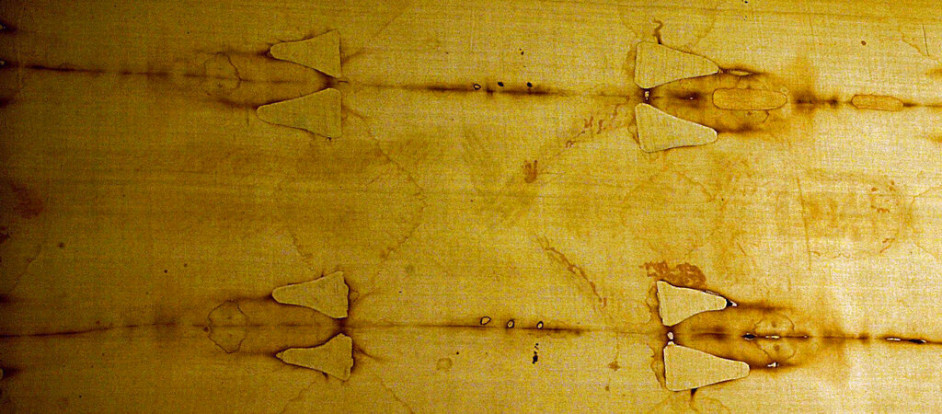Italian researchers using a new X-ray technique have attempted to date the material of Jesus’ Holy Shroud
New scientific data dates the Shroud of Turin to the time of Jesus, substantiating the hypothesis that it is probably real.
In particular, Italian researchers used a new technique involving X-rays to date the material of the Shroud and confirmed that it was made around the time of Jesus about 2,000 years ago.
What we know so far about the Holy Shroud
The Shroud of Turin or Holy Shroud is a piece of linen cloth on which is imprinted the image of a bearded man, and its placement on the cloth is believed to fit a body that has been crucified and wounded.
It has been a source of controversy between the religious and scientific communities for many years, as it is claimed that it is the shroud in which the body of Jesus Christ was deposited, after it was taken down from the Cross, while according to some scientific studies it is simply a human construction.
The Shroud is a yellowish linen fabric, measuring 4.3 meters long and 1.1 meters wide, kept since 1578 in the Turin Cathedral. Its weave is made of herringbone from flax fibers, materials used at the time of Jesus Christ. Until recently, scientists dated it to the Middle Ages.
New data place the Shroud in time in the time when Christ lived
In 1988, an international team of scholars analyzed a small portion of the Shroud by carbon dating, which showed that the Shroud was probably created sometime between 1260 and 1390 AD. He carried out an analytical radiocarbon dating in three different laboratories and concluded that the linen was woven in the Middle Ages.
After a recent study by Italian scientists, the fact that the conditions of preservation of the fabric can alter the reliability of the results of the radiocarbon examination is taken seriously.
In particular, Italian researchers, using a new X-ray technique, attempted to date the material, concluding that it was actually made during the time when Jesus lived, 2,000 years ago.
For the new study, scientists from the Italian Institute of Crystallography of the National Research Council used the wide-angle X-ray scattering (WAXS) technique. This technique calculates the natural effect of time on flax cellulose, estimating its production date.
The team examined with X-rays six small samples from the fabric of the Shroud of Turinwith the aim of discovering small details of the linen structure and cellulose patterns. Cellulose consists of long chains of glucose molecules, which break down over time, testifying to the age of a garment.
To date the Shroud, the team used a number of age parameters, including temperature and humidity, which cause cellulose to break down rapidly.
The team also compared the shroud to samples of other linen woven between 1260 and 1390 AD, finding no match.
The study’s lead author, Liberato De Caro, explained in a statement that the 1988 study should logically be considered a mistake because “as a rule, textile samples are subject to any form of contamination, which is impossible to completely remove from the dated specimen’. “Unless the sample has been thoroughly cleaned, carbon-14 radio dating is not reliable,” he notes.
Source :Skai
I am Terrance Carlson, author at News Bulletin 247. I mostly cover technology news and I have been working in this field for a long time. I have a lot of experience and I am highly knowledgeable in this area. I am a very reliable source of information and I always make sure to provide accurate news to my readers.












